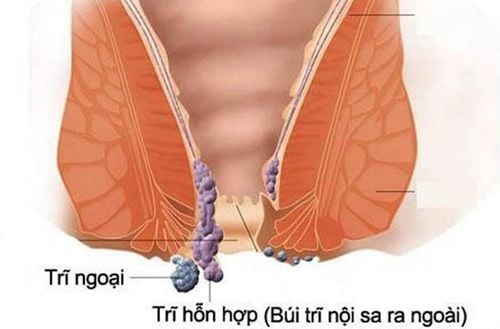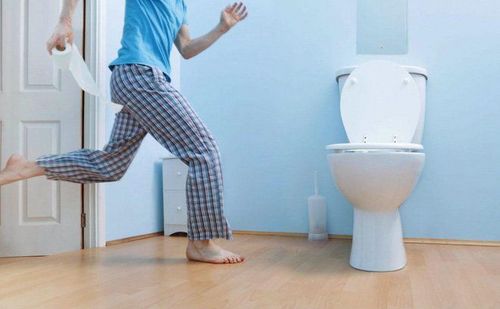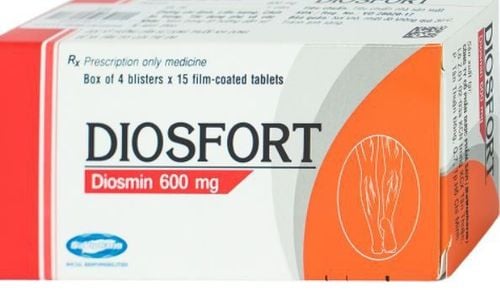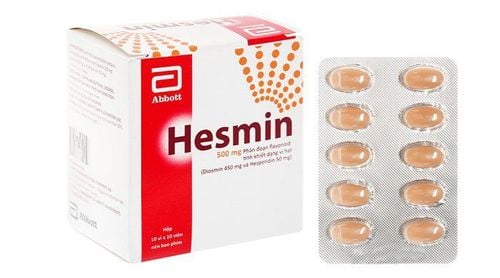This is an automatically translated article.
The article was professionally consulted by Dr. Ngo Viet Thang - Gastroenterologist, Department of General Surgery, Vinmec Ha Long International General Hospital.Rectal prolapse and hemorrhoids have relatively similar symptoms. However, these are two completely different conditions. Misdiagnosis will lead to wrong treatment and cause many serious consequences. Here are some ways to distinguish rectal prolapse and hemorrhoidal prolapse, please refer to:
1. What is rectal prolapse, hemorrhoids?
Rectal prolapse is a condition in which the rectum (the end of the large intestine before emptying into the anus) loses its normal attachment inside the body allowing it to pass through the anal opening. This is a benign disease that does not leave many dangerous complications but causes many inconveniences in daily activities and adversely affects quality of life. Besides, if the prolapsed mass is trapped outside the anus, it can cause strangulation and risk of necrosis. Hemorrhoids are caused by excessive dilation of the hemorrhoidal plexus in the tissue surrounding the anus leading to hemorrhoid formation. Depending on the location of the hemorrhoids, hemorrhoids are divided into 3 types: internal hemorrhoids, external hemorrhoids and mixed hemorrhoids.2. Distinguishing rectal prolapse and hemorrhoids
2.1 Distinguishing by prolapse of hemorrhoids and rectal prolapse
Hemorrhoids: The surface of the prolapsed mass is the mucosal layer. Prolapsed hemorrhoids are usually short and consist of one or more irregular tufts.
Rectal prolapse: The prolapse is part or all of the rectum. The sa mass is long and round in a concentric circle. This prolapsed mass secretes a lot of moist mucus.
2.2 Distinguishing by bleeding when defecating
Hemorrhoids: Right from the early stages of the disease, there is a phenomenon of bloody stools, the amount of bleeding depends on the severity of the disease. Initially, the bleeding is usually small, the blood only sticks to the stool or toilet paper, and the hemorrhoids are small, so they do not cause pain. As the disease progresses, the hemorrhoids swell and bleed more, which can drip or shoot.
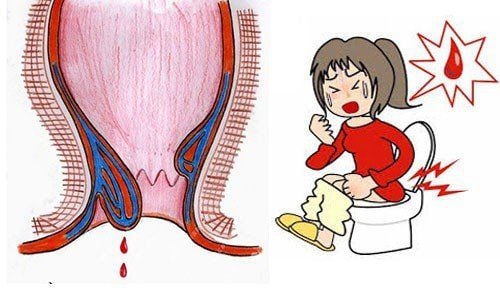
Phân biệt qua hiện tượng chảy máu khi đi đại tiện
3. Prevention and treatment of rectal prolapse
Prevention of rectal prolapse
Drink plenty of water (about 2 liters of water/day). Add a lot of fiber such as: fruits, vegetables, cereals... Eat a lot of foods with laxative effect such as potatoes, spinach.... Practice going to the toilet every day, don't do not. should push too much when defecating
4. Treatment of rectal prolapse
When the disease is still at a mild stage, medical treatments such as laxatives, dietary changes can be effective. However, when the disease is more advanced, only surgery can completely cure rectal prolapse. Based on different principles, there will be many different surgical methods. Depending on the incision, there are two main groups of methods: abdominal surgery and perineal surgery. These surgeries assist in ending recurrent rectal prolapse and provide a significant improvement in quality of life.
Which type of surgery to choose depends on both patient and surgical factors. Patient factors included age, gender, defecation function, fecal incontinence, previous surgery, and serious medical comorbidities. Surgical factors include degree of rectal prolapse, possible effect on bowel function and incontinence, complication rate of surgery, recurrence rate of surgery, and surgical experience. technician.
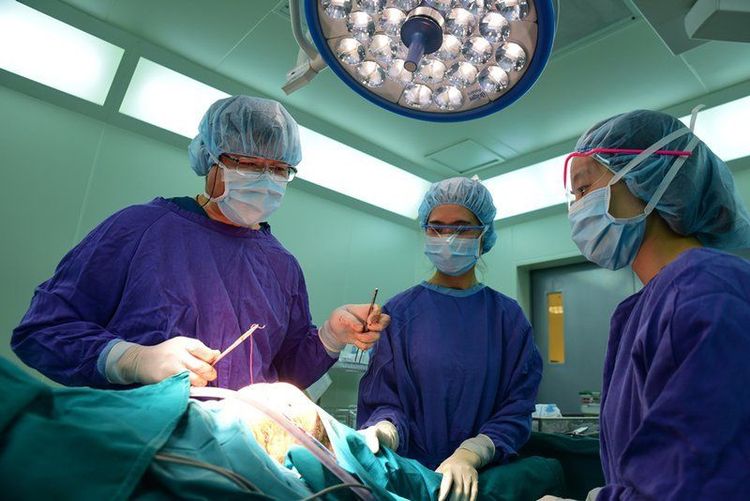
Currently, Vinmec International General Hospital has successfully applied hemorrhoid treatment methods for different types of hemorrhoids with different grades, especially longo surgery to treat hemorrhoids. difficult ring to handle. Treatment of hemorrhoids with the Longo method is indicated in the case of grade 2-3 hemorrhoids, suitable for people with ring hemorrhoids with outstanding advantages:
Much less painful than the classic hemorrhoidectomy due to the surgical area The surgery is located on the dentate line of the anal canal, where there are few sensory nerves No open wounds in the anus, easy post-operative care Shortened hospital stay (average 1-2 days) and guaranteed aesthetics, no complications of anal stenosis due to scarring, fibrosis. To examine and treat with experienced doctors at Vinmec, customers please book an appointment directly at the website for service.
Please dial HOTLINE for more information or register for an appointment HERE. Download MyVinmec app to make appointments faster and to manage your bookings easily.




